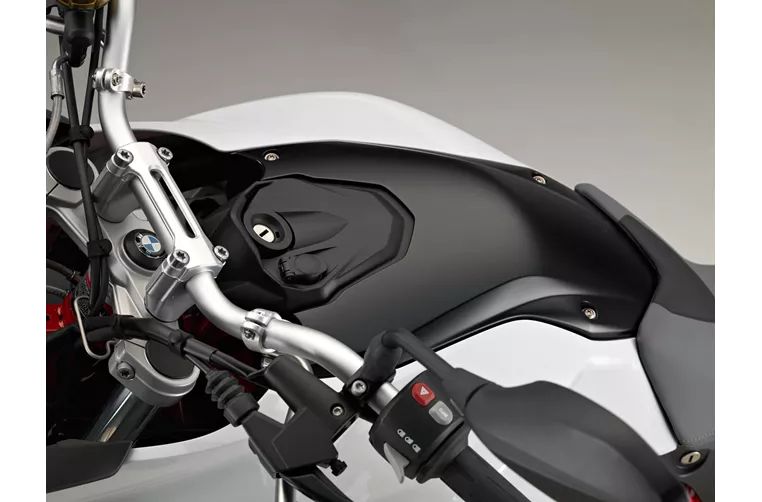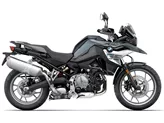BMW F 700 GS 2016 vs. Triumph Tiger 800 XC 2016

BMW F 700 GS 2016

Triumph Tiger 800 XC 2016
Overview - BMW F 700 GS 2016 vs Triumph Tiger 800 XC 2016
The BMW F 700 GS 2016 and the Triumph Tiger 800 XC 2016 are both enduro motorcycles that offer a range of features and capabilities.
In terms of engine and drive train, the BMW F 700 GS has a bore of 82 mm and a stroke of 75.6 mm, while the Triumph Tiger 800 XC has a slightly smaller bore of 74 mm and a stroke of 61.9 mm. The BMW F 700 GS has a 2-cylinder engine with a displacement of 798 ccm, producing 75 HP of power and 77 Nm of torque. On the other hand, the Triumph Tiger 800 XC has a 3-cylinder engine with a displacement of 799 ccm, producing 95 HP of power and 79 Nm of torque. Both motorcycles have a chain transmission system.
In terms of chassis, both motorcycles have a steel frame. The BMW F 700 GS has a tubular, load-bearing engine frame type, while the Triumph Tiger 800 XC has a tubular frame type.

BMW F 700 GS 2016
In terms of assistance systems, the BMW F 700 GS has electronically adjustable suspension, while the Triumph Tiger 800 XC has traction control.
In terms of dimensions and weights, the BMW F 700 GS has a front tyre diameter of 19 inches, a rear tyre width of 140 mm, and a rear tyre diameter of 17 inches. It has a wheelbase of 1562 mm and a seat height of 820 mm. The kerb weight of the BMW F 700 GS with ABS is 209 kg, and it has a fuel tank capacity of 16 liters. On the other hand, the Triumph Tiger 800 XC has a front tyre diameter of 21 inches, a rear tyre width of 150 mm, and a rear tyre diameter of 17 inches. It has a wheelbase of 1545 mm and a seat height of 845 mm. The kerb weight of the Triumph Tiger 800 XC with ABS is 218 kg, and it has a fuel tank capacity of 19 liters.

Triumph Tiger 800 XC 2016
Now, let's compare the strengths and weaknesses of each motorcycle. The BMW F 700 GS has the strengths of being very manageable, surprisingly powerful, and having a comfortable seating position. It also has a low seat height, good brakes, and a good price. However, it has the weakness of not having any distinctive optics.
On the other hand, the Triumph Tiger 800 XC has the strengths of having a great three-cylinder engine with a cool sound. It also has a comfortable seating position and is very easy to handle. It is off-road capable thanks to its long suspension travel and has a comfortable chassis. It offers selectable riding modes, adjustable ABS, adjustable traction control, and extensive features. However, it has the weaknesses of being visually hardly distinguishable from the predecessor, having suboptimal wind protection, and having footrests that drag early with a very sporty riding style.
In conclusion, both the BMW F 700 GS 2016 and the Triumph Tiger 800 XC 2016 offer their own unique strengths and weaknesses. The BMW F 700 GS is known for its manageability, power, and comfortable seating position, while the Triumph Tiger 800 XC is praised for its three-cylinder engine, off-road capabilities, and extensive features. Ultimately, the choice between the two will depend on the rider's preferences and priorities.
Technical Specifications BMW F 700 GS 2016 compared to Triumph Tiger 800 XC 2016
Pros and Cons in comparison
Pros and Cons in comparison
BMW F 700 GS 2016

The smaller of the two F GS sisters, the F 700 GS convinces with a successful overall performance. It looks like its big sister, but at its core it is more of a lively naked bike than a big enduro. The fact that the bike has outgrown the entry-level segment can be seen in the braking system - with two brake discs at the front, it is on a par with its big 800 sister and now decelerates just as confidently. In terms of the chassis, it convinces with good suspension comfort and at the same time a firm set-up in tight bends. Upgrading is never a problem with BMW; in addition to traction control, there is also the electronic suspension ESA for the F 700 GS.
Triumph Tiger 800 XC 2016

The new edition of the Tiger 800 XC can be considered quite successful. Even the "conventional" version can do much more than its predecessor thanks to the ride-by-wire system and standard traction control and ABS (both can be switched off). However, if you want to venture off-road more often, which is definitely what the designers had in mind thanks to the large wheels and spoke rims, you should choose the Tiger 800 XCx, which costs just under 1000 euros more. Thanks to the freely selectable riding modes, the x-version can be optimally tuned to the respective terrain. In addition, there is an engine guard, self-resetting turn signals, cruise control, main stand, underride protection, an additional 12V socket and hand protectors - which probably more than justifies the extra charge.
Price Comparison Avarage Market Price BMW F 700 GS vs Triumph Tiger 800 XC
There are a few key differences between a BMW F 700 GS 2016 and a Triumph Tiger 800 XC 2016. There are the same number of bikes of both models available on the 1000PS.de marketplace, specifically 15. It takes less time to sell a BMW F 700 GS with 90 days compared to 112 days for a Triumph Tiger 800 XC. Since model year 2013 1000PS.de editors have written 7 reviews for the BMW F 700 GS and 16 reviews for the Triumph Tiger 800 XC since model year 2011. The first review for the BMW F 700 GS was published on 02/07/2012 and now has more than 18,800 views. This compares to more than 8,200 views for the first review on Triumph Tiger 800 XC published on 01/11/2010.



















